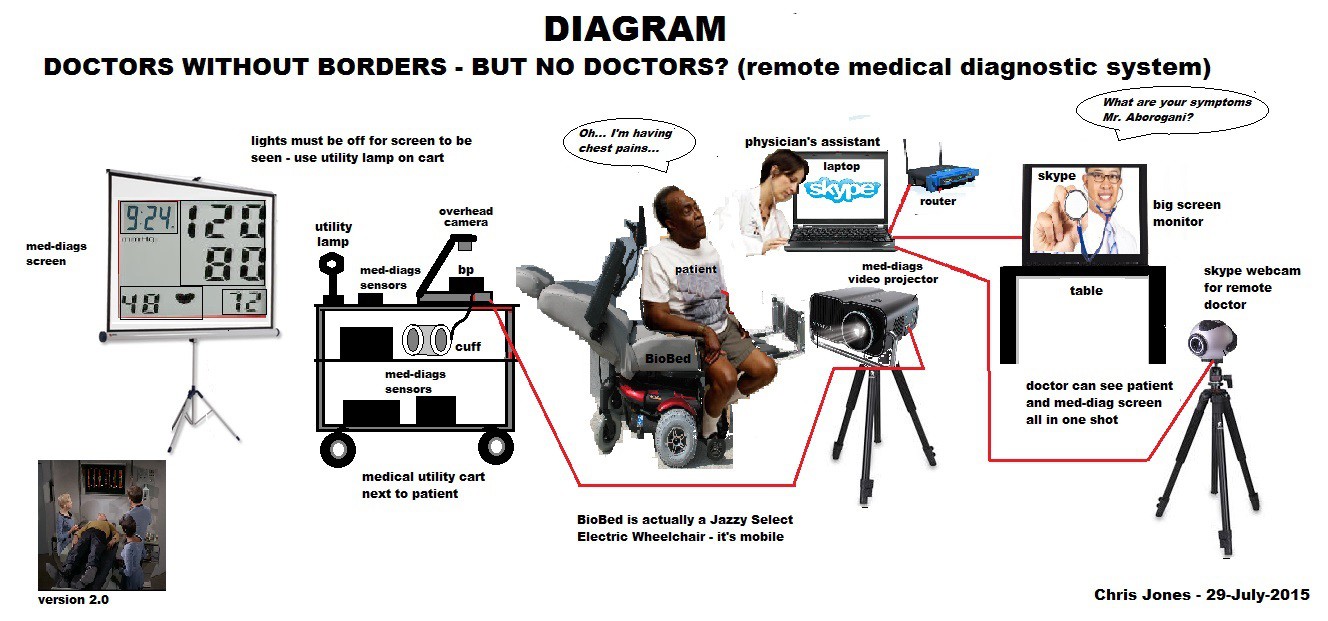DOCTORS WITHOUT BORDERS![]() DIAGRAM
DIAGRAM
![]()
// UPDATE 29-JUL-2015:
// Added A.V.V.A. (ALZHEIMER VICTIM VIDEO ASSISTANT) at #28 below - just scroll down to it.
// #29 - V.I.S.O.R. - (Visual Instrument and Sensory Organ Replacement)
// #30 - BioBed - Star Trek Medical Sick Bay diagnostic bed.
Let's take an idea from Star Trek & local hospitals today.
US hospitals have been using Skype to do off-shore outsourcing of medical diagnosticians. Local US doctors use Indian doctors in Bangalore India by "picking their brains" via Skype. The Indian outsourcer gets to meet the patient and ask questions, The local doctor or nurse or P.A. can physically administer whatever medical recommendations he/she makes.
This idea can be evolved one step further for remote areas of the world with little or no doctors. Nurses, or very well medical trained civilians, could be supplied with fully vetted emergency and sundry medical supplies and a satellite data terminal(s) with laptop with Skype on it. Some areas already have Internet access (i.e. internet cafes, public libraries, etc.). A triage tent could be set up at these locations and patients could sit (or lay) in front of the Skype terminal(s). The local nurse or med technician could follow whatever instructions given by the remote doctor. Obviously major medical procedures would involve MEDEVAC to closest hospital.
Where does Star Trek and HaD come in? Remember the Star Trek TRICORDER that the ship's surgeon uses? HaD could design and build one for this project. It is basically a multiple human body sensor monitor that attaches to Skype via video or automated file transfer. Two separate Skype terminals should be used. One for Tricorder functions and one for face-to-face consultation for patient and local medical technician. The Tricorder terminal needs to have a tech make labels in ENGLISH labeling what the remote doctor is looking at (i.e. Blood Pressure, Heart Rate, EEG, etc.)
Here is a list of human body functions that can be easily monitored with existing (or surplus) cheap toy electronics – and other stuff too:
1) EEG – Remember the Mind Control toys with the 2.4 Ghz head piece? They monitor brain waves.This will need some R&D to figure out how to display Alpha, Theta, and Delta waves.Audio doesn't seem detailed enough. Some sort of oscilloscope or graphing function is needed here.
2) EKG – a simple skin resistance sensor and DC amplifier which could send pulse rate to Skype.Cannibalize a wrist watch heart rate monitor. Aim Skype webcam at wrist watch attached to patient's arm. Clean skin with alcohol wipe and wipe on some sort of conductive cream or liquid to enhance sensor sensitivity. Leaving this attached to patient during examination is indicated. That way you can monitor EKG constantly. #5 can be used to check calibration.
3) Respiration sensor – a sort of stretch sensor (i.e. strain gauge) that wraps around patient's chest and changes resistance base on patients breathing rate. Cannibalize a wrist watch heart rate monitor with remote chest respiratory sensor.
4) Toy camera microscope ([i.e. Jakks EyeClops Bionic Eye) that could be used for eye, ear, and throat examination device (i.e. otoscope). Video out goes to video capture module or just point Skype webcam at EyeClops TV monitor. EyeClops has it's own illumination LED. But you could build in a better one. Also the chassis is stupid looking (big eyeball). Maybe a new style cool looking case. This device could also be used to visually examine body fluid microscopically. They have amazing magnification powers. Finding a way to mounting it on a tripod wouldn't hurt either.
5) Blood Pressure monitor – use a cheap battery operated automated BP monitor and aim Skype webcam at LCD display. Make sure patient's arm is resting on a table and use fresh alkaline batteries. An AC power supply would be better than batteries. They kind that has a remote display AWAY from the cuff would be indicated here for this project. That way you could Velcro the display in front of the Skype webcam away from patient moving around.
6) Electronic stethoscope – get a cheap prenatal baby heart rate monitor and plug audio audio output to Skype Tricorder terminal microphone input. Or just point microphone at the stethoscope's earpiece.
7) Blood Sugar monitor – These are readily available everywhere. The medical tech would take blood sample and put the strip it he device for analysis. Just aim the Skype webcam at the unit's LCD display. This should only be done when remote doctor asks for this so as not to confuse patient strips,
8) A cheap LCD clock that displays local time and date. A separate one that displays remote doctor's local time and date. Also another for GMT (UTC or Zulu), This is critical believe it or not. Time log is very important in medicine. Always replace batteries periodically.
9) A separate Internet laptop or PC attached to a automated medical diagnostic program in case remote doctor not available or lost link. Also is good for 2nd opinion type consultation. Just remember to have remote doctors to check their egos at the door (i.e. be tolerant) when you use #9 in front of them.
10) AED – make sure batteries are always fresh or recharged. Every user must be trained in it's use. They are available surplus and under government grants.
11) Remote pain indicator – A strain gauge attached to a hand exerciser that indicates a scale of 0 to 10. Tell patient that 0 means no pain at all or not squeezing it at all, 5 means moderate pain. 10 means really bad pain the worse. It could be LCD digital or a analog VU meter. Patient doesn't have to vocalize pain just squeeze hand controller. He/She could constantly watch display to indicate pain during examination. If they can't use hands or are blind then #11 is pointless. 10 should set off a audio beeper too to alert med tech if he isn't paying close attention already.
12) VSA – voice stress analysis – usually this is used for lie detection. However, you can use this to detect stress or deception. This can be downloaded for free or use the Israeli made TRUSTER. Just get a baseline (patient's name and particulars) then everything they say afterwards is with or without stress.
13) Snake inspection camera – these are very cheap now (i.e. Harbor Freight). They have a thin illuminated snake like camera head and a LCD video monitor with JPG file saving ability via USB port. Of course it will need to be sterilized with hand sanitizer or alcohol before you stick it in a human orifice. Don't stick it wounds – too tight and will aggravate wound. Also it wont work well with Vaseline on camera either. Not recommended as a proctologist tool. Since you cant put Vaseline on a camera, you can't cover with plastic and expect to see anything, and if you don't have patient do a colorectal cleansing ahead of time you can see how this one wont work well for proctologist exam. However, it works great for 1st responder emergency building tight space survival examination for earthquake or building collapse victims. You can also physically exam a patient stuck in a building or structure collapse. This would make a great replacement for #4 but it doesn't magnify nor does it have video output. Makes for great dental exam tool.
14) Tons of Hand Sanitizer – local med techs should use this RELIGIOUSLY to avoid cross contamination and infectious disease transmittal from patient to patient (and themselves), This stuff is great for sanitizing toilet seats and bowl before use. Always carry a small bottle in your pocket just in case. However, still wash your hands constantly. Don't depend on this stuff to clean your hands totally.
15) Catheter (male) – Benjamin Franklin designed one for his cousin that was much more comfortable for him. Sometimes due to male genitalia it is difficult to do urethra catheterizing. Sometimes difficult to do urine samples too. A method to guide urine away from body into a receptacle (empty milk jug?) without using invasive and painful urethra insertion. One idea is to use an over genital catheter. Using a small section of PVC vacuum cleaner hose (the stiff part leading up to the hose). Hacksaw a 1 to 2-foot section. Always wash it it out with scalding hot water after use and put #14 around the inside and outside of tip that touches the human. This is for emergencies only. It keeps patient's clothing unsoiled and can be aimed on right angles. Patient (or nurse) just needs to put it on (one size MOSTLY fits all sizes). Easily concealable too. Black hose pipes work great at night when patient needs to go outside in the woods. Just remember SANITIZE SANITIZE SANITIZE!
16) Thermometer – Life Labs Wireless Remote Thermometer Temperature Monitoring System – uses 2.4 Ghz. Battery operated. Very cheap from China. About $20 USD. On EBAY right now.
17) Google Translate with voice to text – need for this is obvious and it's free. You can actually have patient speak in his/her native language and Google will generally translate it to English. Works vice versa too. This is great for 1st responders in foreign lands. Works better on SMARTPHONE but can also work on PC tablet or laptop.
18) A basic patient interview questionnaire which asks all of the pertinent questions the remote doctor will ask. So get it done ahead of time. A automated computer program would be better. It would save to a remote database and doctor can view it by ID number. All Tricorder readings should be performed and entered before doctor is brought up online.
19) Tons of Nitrile rubber gloves. Self explanatory. In an emergency use a plastic bag with a rubber hand to hold it on your hands or it will slip off. Baggies, grocery bag, newspaper bag, etc.
20) Believe it or not Radio Shack sells scalpels. Just remember to sterilize it thoroughly and only use it under the remote doctor's assistance. Some people do their own sebaceous cyst excisions but NOT recommended at al!!
Maybe you can add to this list?
P.S. -
#15 – is TAPERED and can be cut to conform to girth. Just remember to debur it and use sandpaper to make it painless to patient. Let patient keep it as their personal one. But you could have a communal one if you practice intense sterilization procedures on it. I have nothing in mind for females. Maybe somebody else cam tackle that one.
The TRICORDER display should be mounted vertically on a wooden board on the wall for patient and med tech to view easily. Then the Skype webcam can be mounted on a tripod and aimed at it for remote doctor. BIG large font black on white labels should label all displays on the board. Some sort of illumination is needed for the LCD displays and the webcam. Nobody should walk or stand there so as not to block doctor's view of Tricorder board. The webcam can be moved to aim at other stuff like the BP/Pulse wrist watch unless you can figure out a remote display for that.All small TV video monitor can be mounted on Tricorder board for the otoscope EyeClops Bionic eye.
I know someone can figure out how to use an Arduino or Rasberry Pi for this.
OH I FORGOT:
(21) Tons of surgical face masks, eye splash goggles, Lysol (carbolic acid), Clorox (bleach), Hydrogen Peroxide (topical antiseptic), and 5-gallon plastic buckets with lids for biological waste disposal (Home Depot or Lowe's buckets) - they would be dumped in incinerator or down river from humans - they can be used as emergency latrines too (pour in 2 parts water to 1 part Clorox for latrine water).
(22) Digital camera to record patient exterior condition and ongoing patient identification in cases where personal names are difficult to obtain or understand. Should be saved to PC with captions (or to website like Facebook or Instagram). Caption should have patient ID # captioned with "alleged" personal name and village.
(23) Emergency first-aid trauma kit for gunshot and animal bites. Female sanitary inserts (i.e. Tampon) good for invasive blood absorbent. Hemostats from Radio Shack? Cynoacrylic compound (i.e. Crazy Glue) for emergency wound suturing. Radio Shack or Home Depot large nylon tie-wraps for make-shift tourniquet.
(24) Calumen sticks and/or driveway solar lights from Dollar Store for emergency lighting. Must be recharged with sun light during day. Calumen sticks can be extended by putting on ice.
(25) College refrigerators to preserve supplies. Also plenty of ice cubes to induce hypothermia for organ preservation (i..e. severed finger, surgery, etc).
(26) Plenty of Dextran, Okra solution, PVP, RIngers Lactate, Saline Solution, Blood Expanders like Oxigent for emergency 1st responder health care.
(27) Vigabatrin or (SABRIL) - antiepelctic but is known to reverse chemical addiction like Cocaine, Nicotine, etc. USA is only country not using it; despite being approved in 2009.
(28) AVVA - Alzheimer victim video assistant. How about a portable video player like the Hasbro VideoNow Player. It has mini-disks that can play up to 15~20 minutes of multimedia and in color. Ideally a loved one would record 30 minutes of family introductions of everybody the victim sees on a regular basis. Everyone has name badges. The videographer walks around the house interviewing everyone as if it's the first time the victim met them. They would say their name and their relationship to the victim. Then the videographer films a "selfie". They would also film appliances and describe their purpose and dangers - like "Don't put shoes in the refrigerator!" "Do not touch this stove. It is HOT and will burn you!" and whatever else will help. Then you paste on a big button over the play button called "PUSH ME NOW". There is no headphones or power buttons for the victim to mess with. It is always plugged into power and left on. Try gluing or tie-wrapping the power plug in on both ends so it can't be disabled by the victim thinking they are saving power.
Tell the victim to press the PUSH ME BUTTON every so often to help refresh their memory on things. It will auto-rewind so when they are finished it will resume at beginning. They can listen to it whenever they want. Just adjust the volume or put headphones on the victim if you are getting tired of hearing it over and over. No more need you hear: "Now who are you again?" and your the wife or daughter of the victim.
#28 - V.I.S.O.R. (Visual Instrument and Sensory Organ Replacement) - A SmartPhone is inserted in visor below. It is fed video from a remote video source over a wi-fi network. The web cam could be attached to a telescope, microscope, or any device that can supply EM spectrum information via a video link. Multimedia can be fed to it like videos, DVDS. TV, etc. This will help those with visual acuity problems see better temporarily.
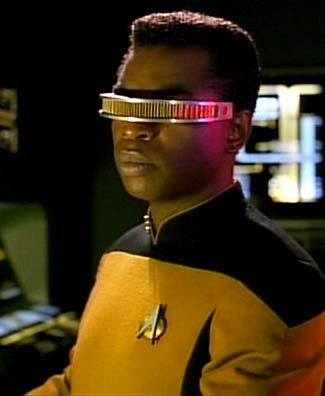
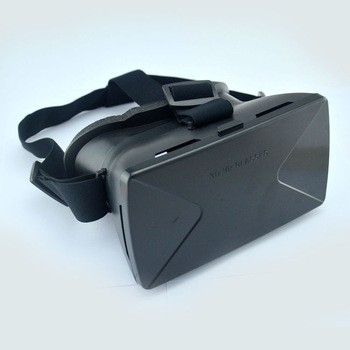

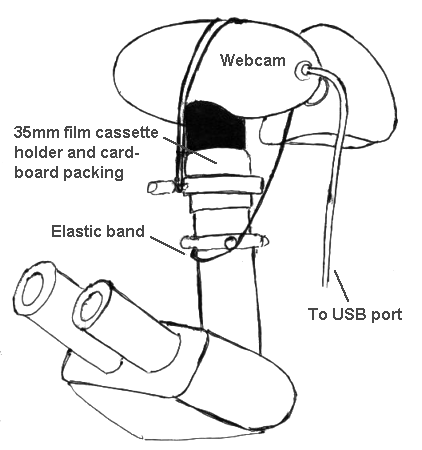
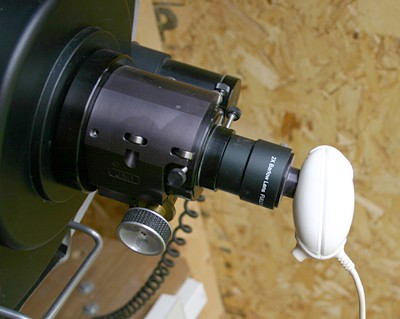
#29 - BioBed - A Star Trek Sick Bay bed that is surrounded by medical diagnostics and a Skype two way display terminal. 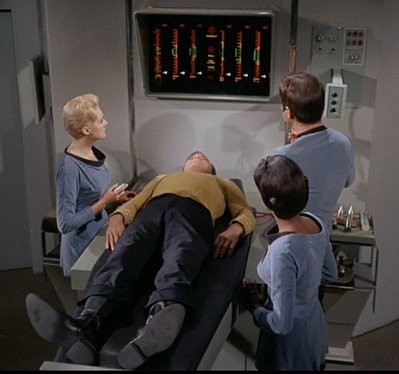 BioBed - like the one in Star Trek The Original Series. ^
BioBed - like the one in Star Trek The Original Series. ^
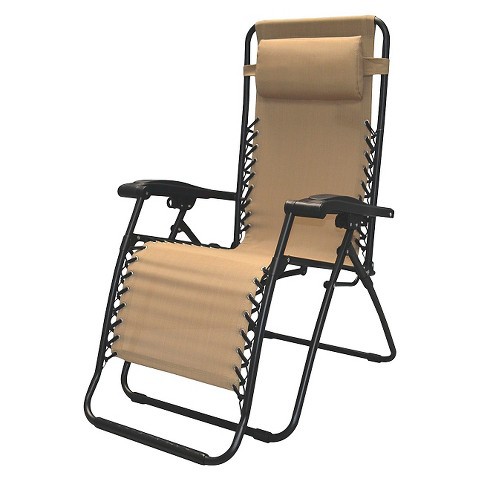
Zero Gravity Chair - Used to relax patient and make diagnostics easy for medic ^
OR A Jazzy Wheelchair?
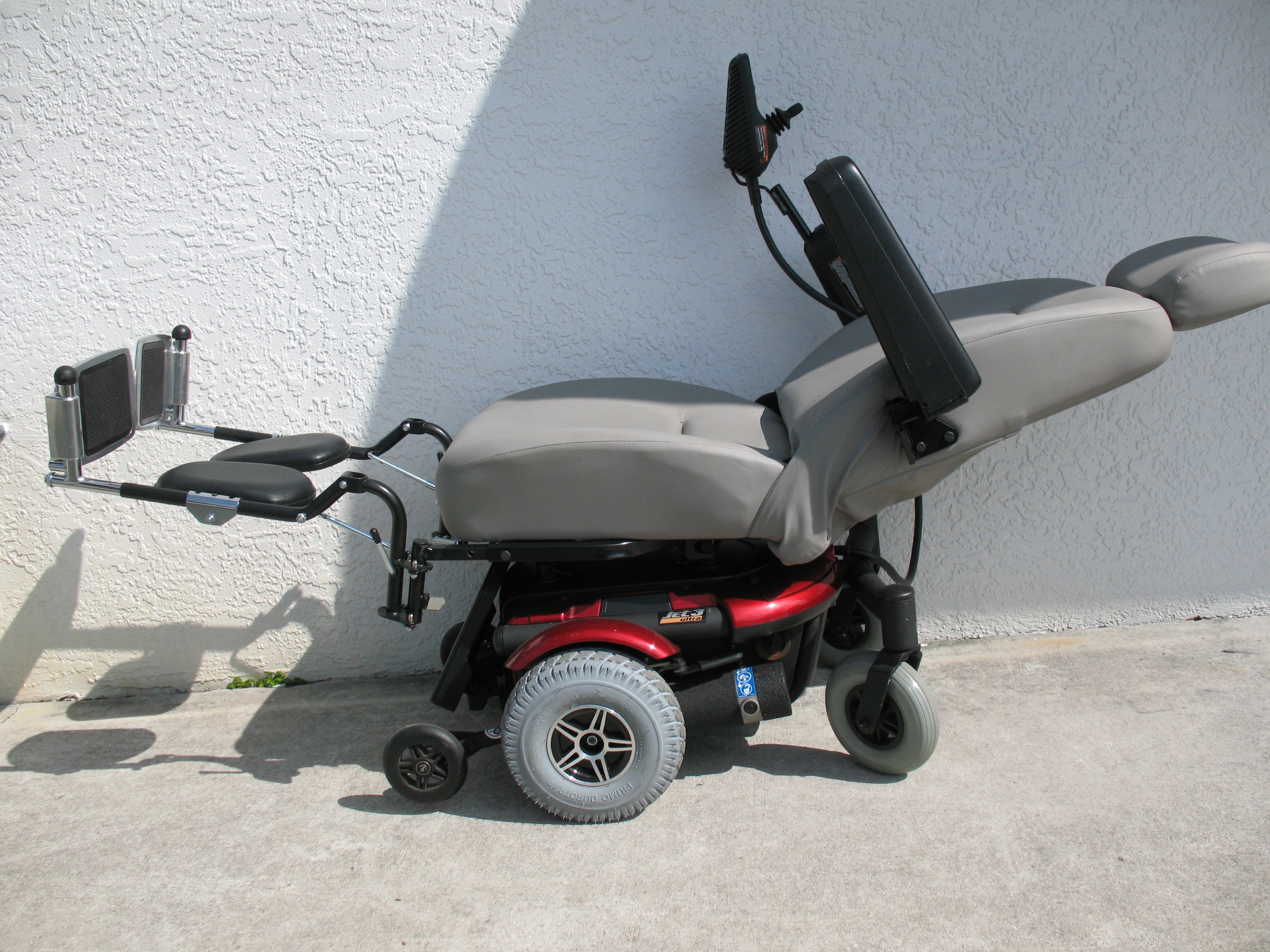
 Medical diagnostics projected onto a movie screen behind patient. Another screen projection in front of patient for Skype 2-way communications.
Medical diagnostics projected onto a movie screen behind patient. Another screen projection in front of patient for Skype 2-way communications.
 chris jones
chris jones DIAGRAM
DIAGRAM